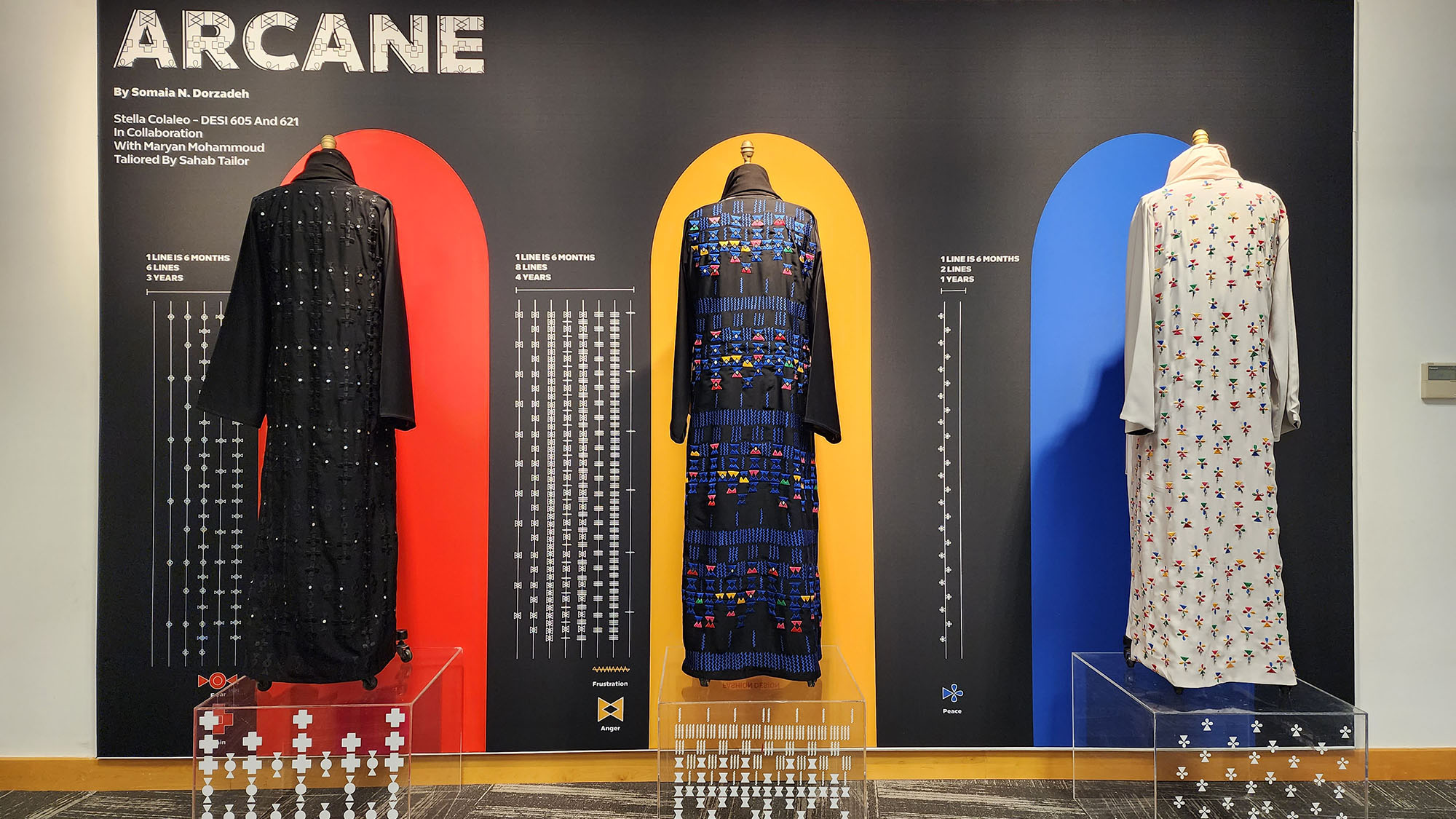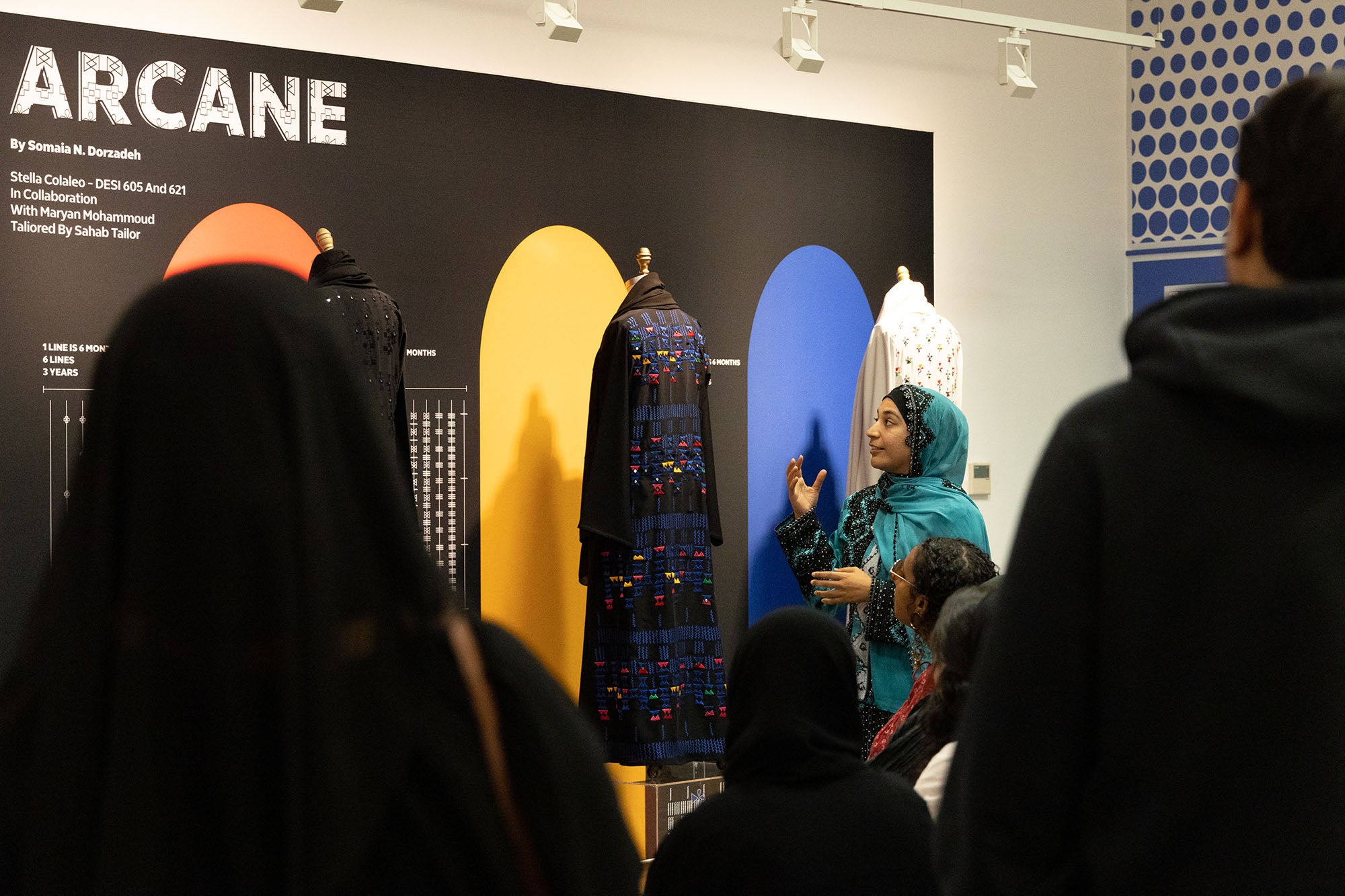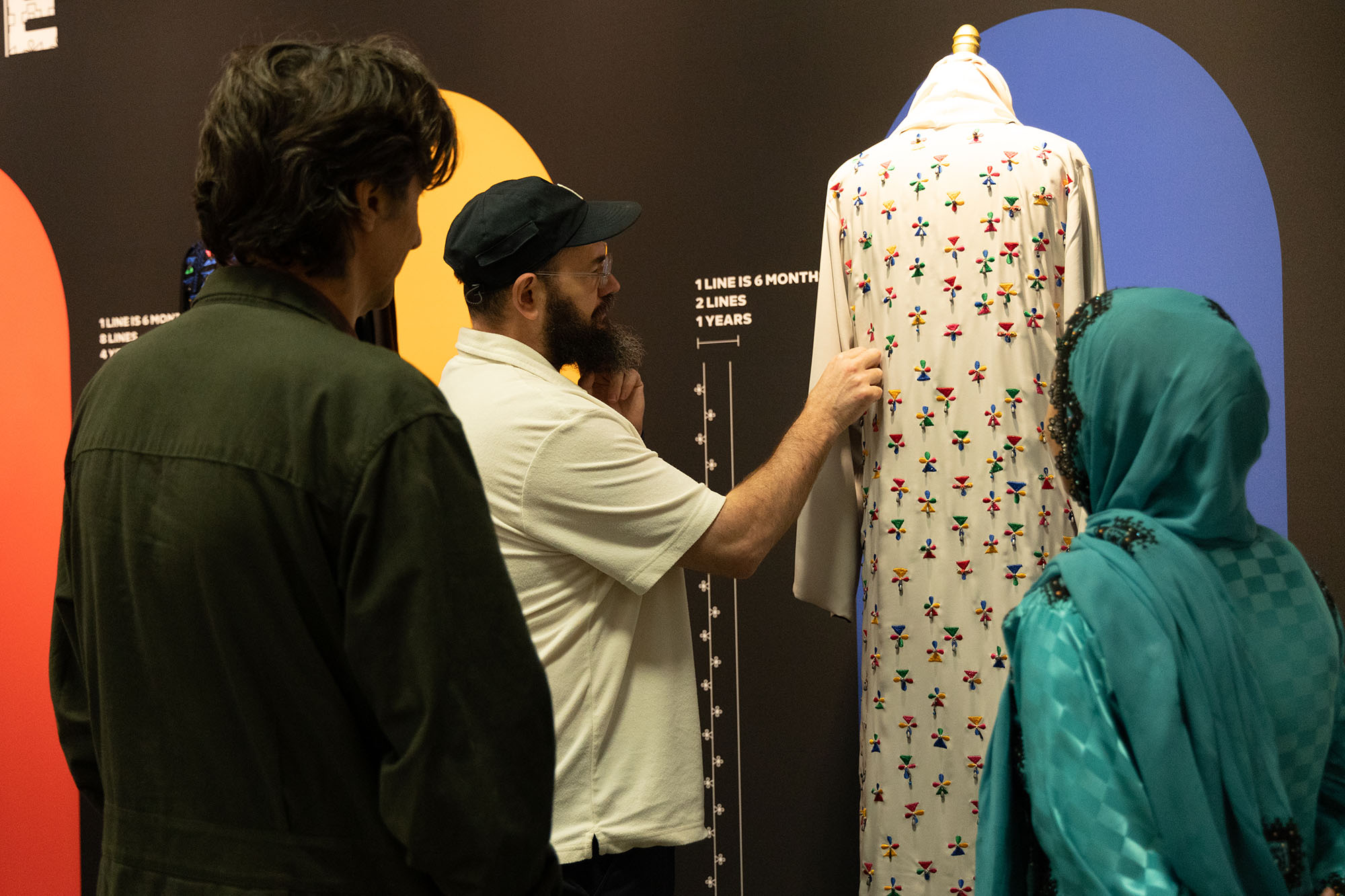- Academics
- Admissions & Enrollment Services
- Research
- Academic & Creative Spaces
- Strategic Partnerships
- Our Impact
- Student Affairs
- Campus & Community
“Arcane” at the Library Exhibition Space by Somaia Dorzadeh
April 11, 2023
Categories

During the Spring of 2023, an installation titled ‘Arcane’ lit up a corner of The Library at VCUarts Qatar.
During the Spring of 2023, an installation titled ‘Arcane’ lit up a corner of The Library at VCUarts Qatar. Created by Somaia Nahang Dorzadeh, an MFA in Design Class of 2023 graduate, the project was a visual representation of significant phases of her life – her experiences tied to belonging to the Balochi minority community in Qatar.
In this short conversation, Dorzadeh, who is also a VCUarts Qatar BA (Hons) Art History graduate, explains the connection between the project and the inspiration behind it.


Can you tell us a little about the project, the inspiration behind it, and how it relates to your identity as a Balochi living in Qatar?
The installation is called “Arcane”. It is a collection of three abayas, in three different colors, with differing Balochi embroidery. Each of the abayas speaks about a phase of my eight-year journey toward reaching self-acceptance.
The first phase is called Self-Perception because it speaks about the first three years of my journey (around the last three years of my high-school) when I became aware of my identity – that though I’m born and raised in Qatar, I’m from Balochistan. That period stands out due to the many experiences I went through as a result of belonging to a minority community that had numerous stereotypical assumptions attached to it, almost all of which were negative. I was going through those emotions on a daily basis, but I did not know how to deal with them. This is why I used the color black – because while these emotions were there, I did not know how to seek help or share them with someone who could understand me.
The second abaya represents the second phase of my journey, which took four years. It is titled Self-Discovery. In this phase you’ll notice how the colors of the embroidery become brighter and a bit more colorful because that is when I started introducing myself as an expatriate from Balochistan. That did not mean that I had accepted myself fully; rather, I was still working on myself.
The third abaya is called Self-Acceptance, which took a year. This is when I learned to acknowledge my emotions and move on. The decision to move on was also due to the fact that the emotional weight that I was carrying around until then was weighing me down and holding me back from realizing my full potential. It took time to reach that point, but after accepting myself for who I am, I felt – feel – lighter. This lightness is reflected in the choice of the color of the third abaya and the embroidery on it; it reflects the peace within me.
The concept and designs you see in ‘Arcane’ are mine, but this collection wouldn’t have come to life without my MFA Professor Stella Colaleo’s support and mentorship.
In the brochure you created about the installation, it says that you “want to make their journey less heavy by advocating self-love and encouraging and empowering people to be themselves.” How does the project directly address this?
I feel that many people are reluctant to speak up about certain personal experiences, such as being bullied or shamed due to their cultural or ethnic backgrounds and their identities, as they’re cautious of others’ perceptions of them. I was one of those people.
My identity as a Baloch, a minority group in Iran, affected me negatively. Throughout my life, other Iranians referred to me as ‘barbarian’ or ‘backward’ telling me I would always be a loser. Of course, this disturbed me deeply. Given that I went through – and overcame – all these, I hope this project will make people who face similar challenges know that they are not alone. I want to show them how I came to the part where I accepted myself in the hope of helping others in their journeys as well.
I also want such people to know that the process from self-perception to self-acceptance is a long one; for some people, it takes time to be comfortable in their own skin. It took me eight years to accept myself. Through these designs, I hope people realize that they do not have to get over things right away, that it’s ok to take the time you need. That’s why I feel my project advocates self-acceptance and self-love.
You studied (both the undergrad and grad programs) at VCUarts Qatar. Has being in a creative environment helped you come out of the conflicting emotions you went through growing up?
Without a doubt, being in a creative space and environment like VCUarts Qatar and interacting with people from diverse backgrounds in the University has helped me a lot. During my time here, I realized that being in a creative space helped me turn the negative experiences and emotions I had into hopeful, positive and powerful ones.
I wouldn’t be where I am now without the immense support that I had from VCUarts Qatar. I am very thankful for the kindness, humanity, and acceptance that I experienced here, be it from faculty, staff or students, all of whom helped me throughout this journey.
Lastly, we’d like to ask you something we’re curious about. You chose to study an MFA in Design after studying a more academic subject for your undergraduate course. Why?
There is more than one reason. First, while I enjoyed studying Art History, I do have a creative side to me, and I felt I wanted to experience a program that would give me a suitable platform to showcase that side. Second, I aspire to teach at the university level. While I was a student, I often overheard other students say how bored they were when the class was only lecture-based. Now that I’ve taken this course, hopefully, when I become a professor, I will be able to balance both academic and practical hands-on experiences and make my classes more interesting, irrespective of the subject I teach. Third, I was looking for a program that taught me techniques and skills that I had never come across and the MFA program certainly delivered that. And finally, I feel both my undergraduate and postgraduate studies helped me evolve as someone proud of her ethnicity and culture. Art History taught me how unique one’s culture is and that I can celebrate the art that revolves around it, while the MFA in Design taught me to share my culture through hands-on creativity.

